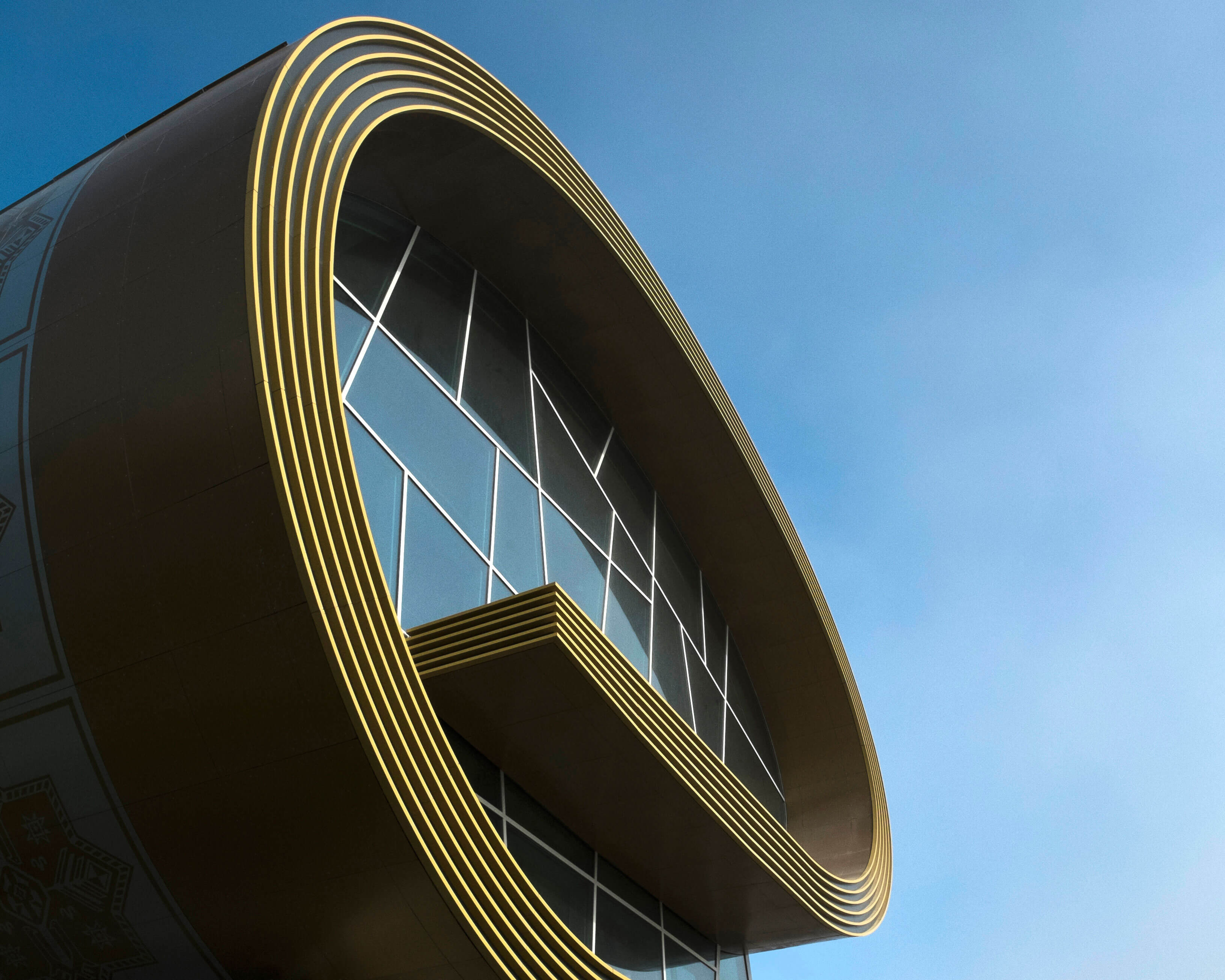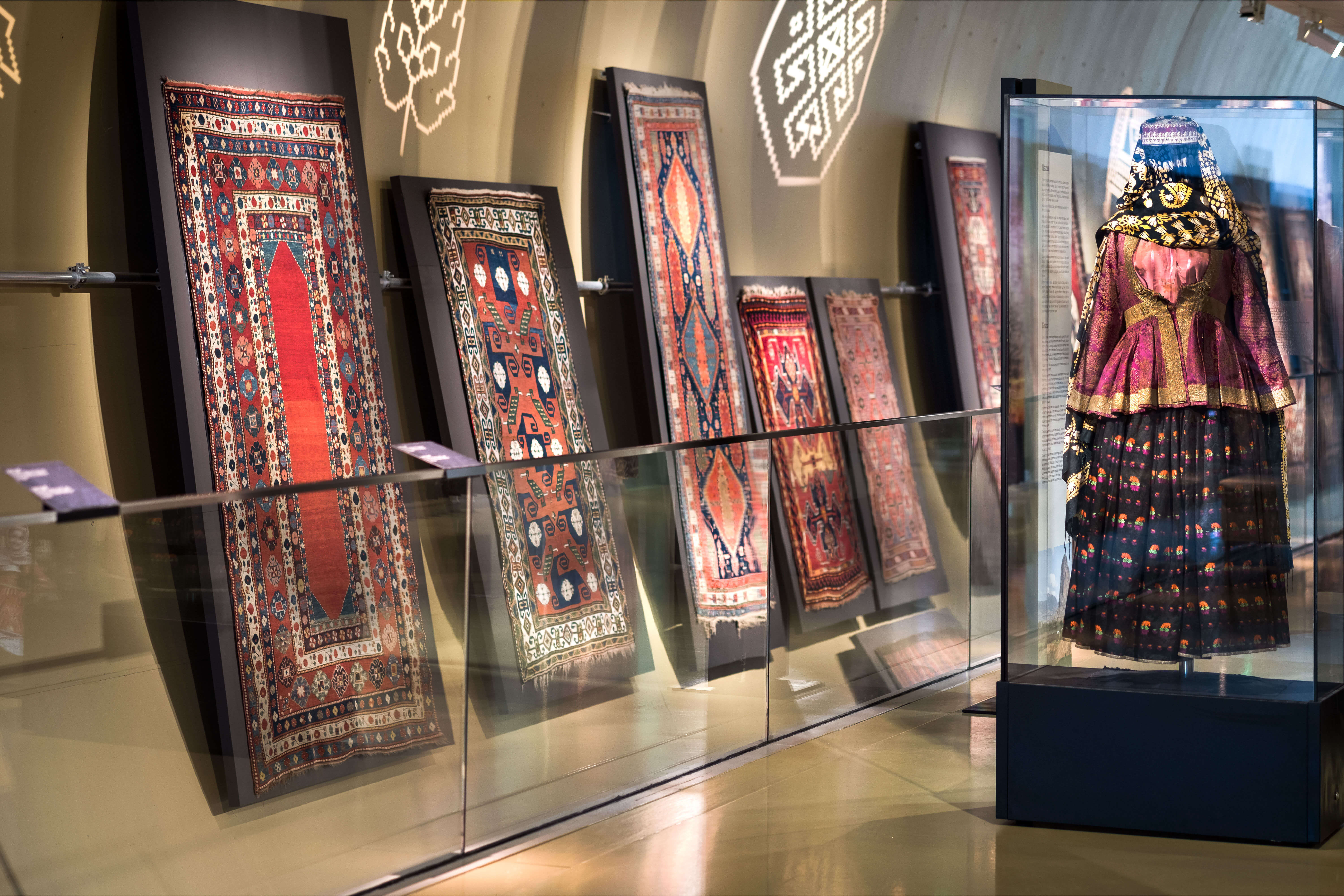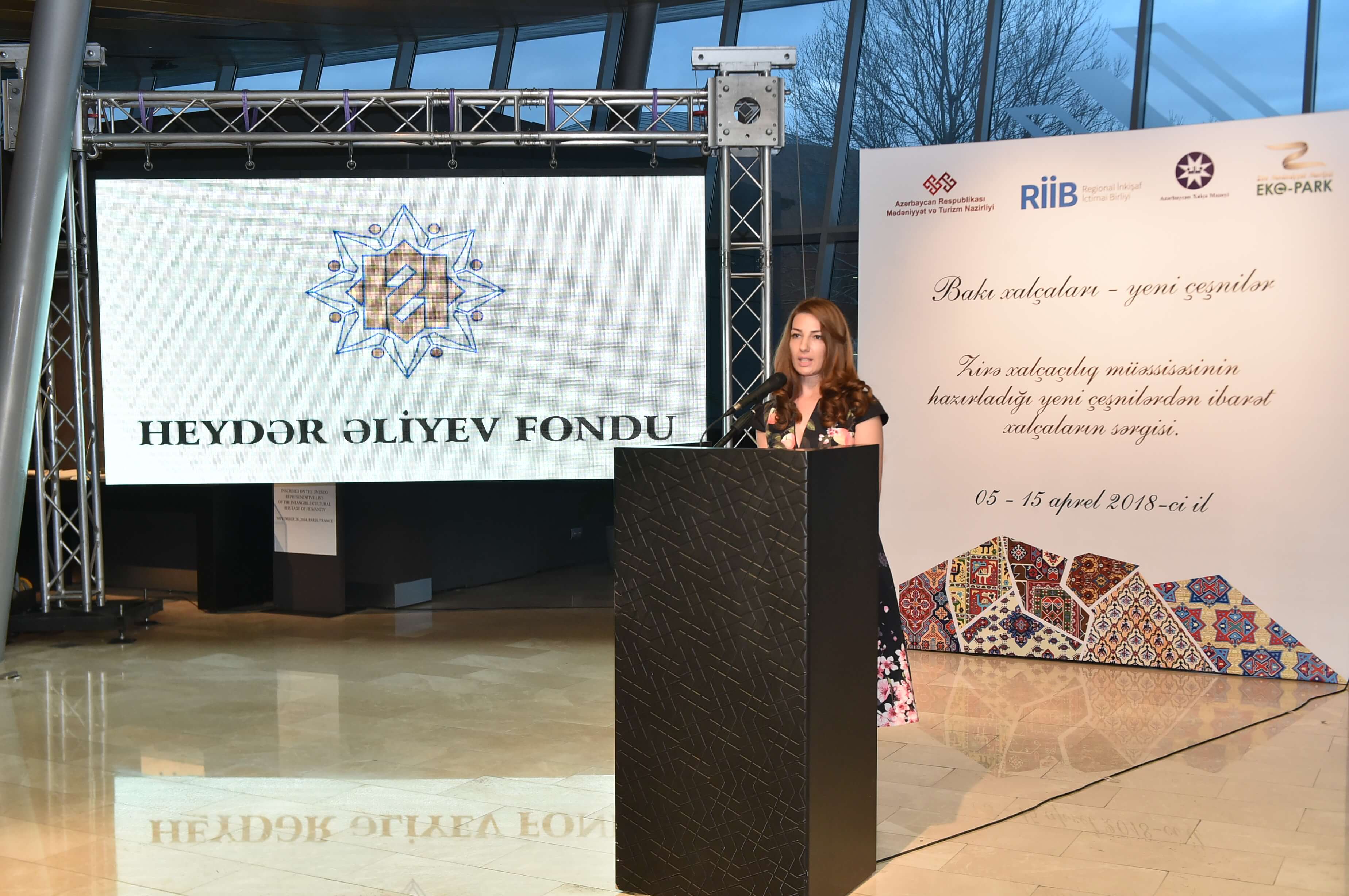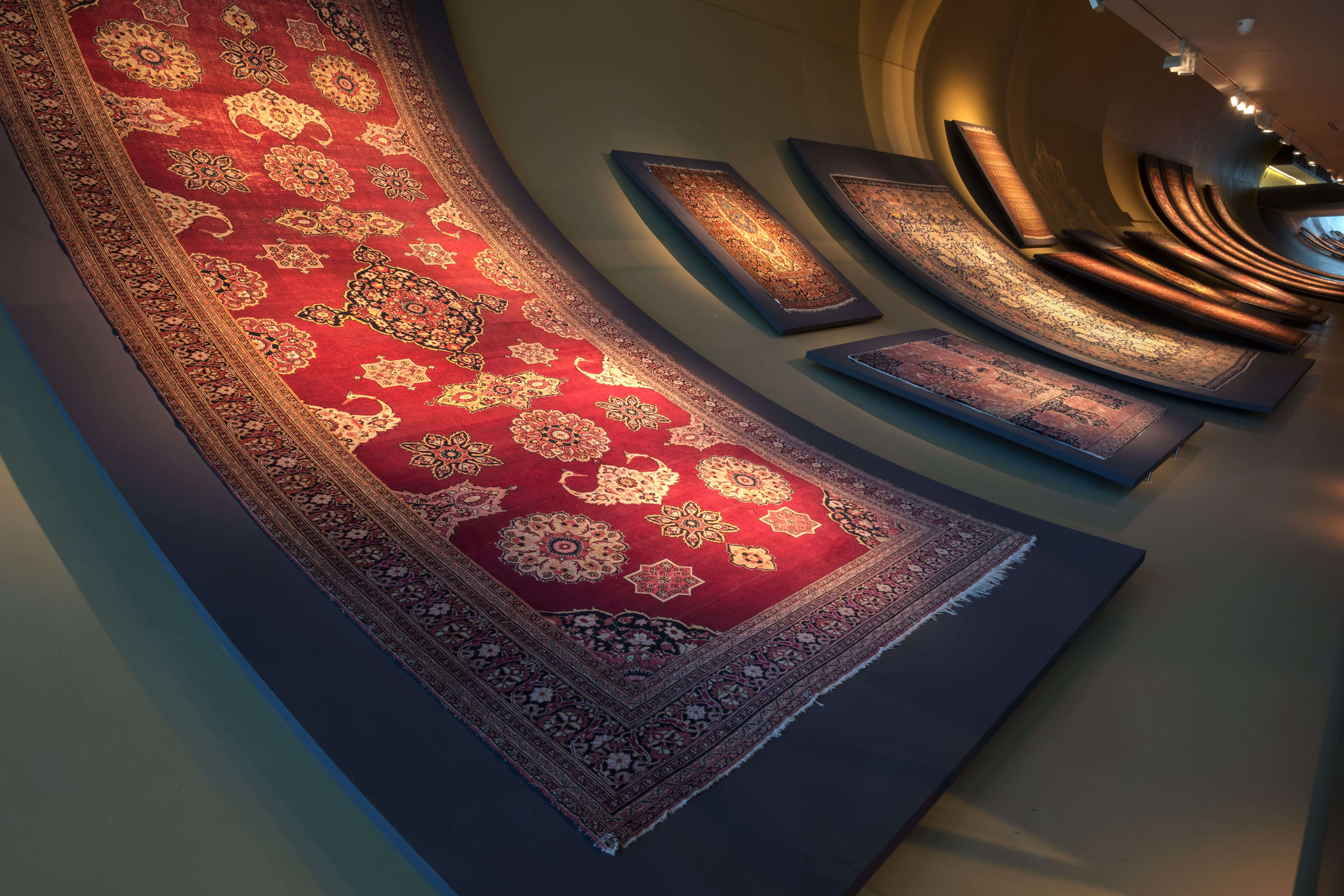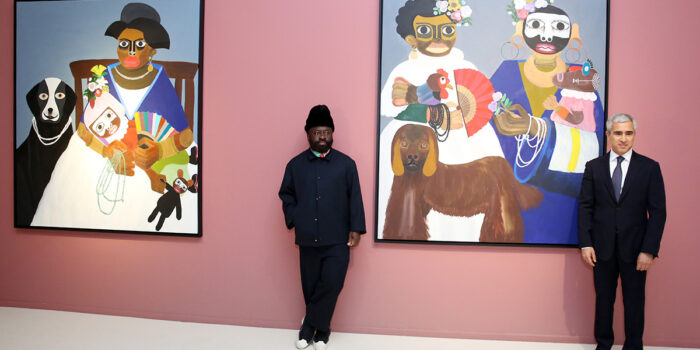In 2018, the year the former Azerbaijan Democratic Republic celebrates its 100th anniversary, we talk to Shirin Melikova, Director of the Azerbaijan Carpet Museum, about the space that showcases the country’s national heritage and reflects its history and traditions
What exhibitions are coming up at the Azerbaijan Carpet Museum this year?
This year is a significant one – it marks the 100th anniversary of the former Azerbaijan Democratic Republic. To mark the occasion in April, the presentation of a unique 17th-century Khatai (Dragon) carpet was held in our museum. It was brought from overseas and presented to our museum with the support of the Heydar Aliyev Foundation and is now considered one of the pearls of our collection. Both here and abroad we will be holding a series of events including international symposiums, conferences and exhibitions. We are also preparing for the presentation of two more carpets on 28 May, which is Republic Day. The first of these was purchased by the museum, while the other was purchased by a private collector abroad who donated it to the museum. And in November, we plan to hold a huge exhibition in one of the leading museums in Moscow.
Also, on Carpet Weaver’s Day, on 5 May 2018, we put on an exhibition of completely new carpets woven by museum weavers in the museum’s Department of Traditional Weaving Technologies using traditional techniques.
In October 2018, the museum will host its third International Symposium of Common Languages of Turkic World: Patterns, with the topic ‘Intersections in Felt’. The symposium will include three full days of sessions, two thematic exhibitions, a fashion show, workshops and a fair exhibition. It will bring together specialists from 15 countries all over the world and aims to show the history of felting, its importance in everyday life over the centuries and its popularity today.
What is your favourite piece in the permanent collection?
That’s quite a difficult question, as our museum has many beautiful objects – we have more than 5,000 examples of flat-woven and pile carpets, as well as carpet products. However, I could single out the Shamakhi carpet, which is a rare artwork possessing a rich composition. These carpets are named after the capital of the Shirvan region of Azerbaijan where they were made, and this particular 17th to 18th-century example is one of the oldest objects in the museum’s Pile Carpets collection. In addition to its historical and artistic value, the Shamakhi carpet is notable because it is the first one to have been bought by the museum at a foreign auction. Carpets of this type, between 300 and 400 years old, are usually in a worn and fragmentary state. There are very few of them left and most are in private or major museum collections already, so this well-preserved example is a great rarity and its acquisition and return to its homeland is a significant event for our culture.
What are your plans for the museum in the next few years?
I’ve been at the museum since March 2016 and we already have many plans in motion. There’s endless work to be done on the displays and their engagement with modern art. Also, since 2016, we have sought to restore our historical monuments, especially precious carpets, to Azerbaijan. So, as part of our project called Homecoming of Unique Samples of Azerbaijani Carpet Art, we have examined the collections and determined which artworks should be purchased first. Since then, we have acquired unique carpets from the 17th to 19th centuries, as well as examples of national costume, jewellery and embroidery.
In 2018 President Ilham Aliyev signed a decree approving the State Program for the Protection and Development of Carpet Art in the Republic of Azerbaijan for 2018 to 2022. This has led to several exhibitions being held both in our museum and abroad, and further research is underway. We work with world museums where Azerbaijani carpets are stored, such as the Turkish and Islamic Arts Museum in Istanbul, with whom we are working on attribution and on the publication of a catalogue, as well as preparing an exhibition of Azerbaijani carpets from their collection.
The Azerbaijan Carpet Museum was recently given a Best Experience award by the International Council of Museums. What sets this collection apart from others?
The Azerbaijan Carpet Museum was the first museum in the world dedicated to carpets, with its main purpose being to store, research and exhibit the best examples of carpet weaving, which represents Azerbaijan’s national heritage. We hold a rich and diverse collection, and the inclusion of the Azerbaijani carpet in the UNESCO Representative List of the Intangible Cultural Heritage of Humanity demonstrates the importance and value of our national culture in a global context. This important recognition took place with the support of the First Vice-President of Azerbaijan, Mehriban Aliyeva, whose work in popularizing and promoting the culture and art of our country cannot be underestimated. The protection of such heritage means taking measures to ensure its viability, including its identification, documentation, research, preservation, protection, and promotion, enhancement of its role, transfer to following generations, and the revival of its various aspects. On the International Committee for Documentation (CIDOC) annual conference in Tbilisi last year, I presented specifics of our documentation. And our museum was awarded the Best Experience award in the field of intangible cultural heritage database. Thus, the Azerbaijan Carpet Museum’s experience is presented as an example to the world’s museums.
Tell us about your interest in Azerbaijani art.
I graduated from the Azerbaijan State Academy of Fine Arts as an art historian and my thesis was on artistic fabric and embroidery in Azerbaijan from the 16th to 18th centuries. Since then, I have been assistant professor in the art history department of the Academy. I have collaborated with one of the leading galleries in Baku, Giz Galasi, and curated cultural projects at the Heydar Aliyev Foundation. I have written more than 10 books about Azerbaijani artists, co-ordinated projects such as the travelling exhibition ‘Fly to Baku: Contemporary Art from Azerbaijan’, the 2013, 2015 and 2017 national pavilions at the Venice Biennale, the Days of Azerbaijani Culture series of events in France, and art exhibitions at the Heydar Aliyev Center in Baku.
My experience of being engaged in contemporary art exhibitions for many years has brought a new impetus to the museum’s permanent displays. The addition of works by contemporary artists has aroused great interest among our visitors. The displays become dynamic, with the work of conceptual artists presented alongside ancient and rare carpets and embroideries.
Who is your favourite artist?
As an art historian, I get pleasure from all different eras, styles and trends in art, so it is difficult to single out one period or one artist. However, I would especially like to mention the 1960s and the cultural changes in the era following the ‘Khrushchev thaw’ in the mid-1950s. That period was marked by a breakthrough in Azerbaijani art and became one of its brightest times. It is when many artists who are well known today started their careers. These artists had no opportunity to exhibit their works back then, because their vision of the world and their approach to painting were far from the official line of Soviet art. In their work, they combined national artistic traditions and avant-garde European art. This group eventually became known as the Absheron School and was centred on Javad Mirjavadov, an outstanding artist who was the founder of the Azerbaijani avant-garde. The school’s art was marked by formalistic and bourgeois criticism, undermining Soviet ideology. It was an important time for Azerbaijani art.
Tell us something that many people might not know about the museum.
Despite it being one of the leading museums in textiles, it also houses a small but very interesting jewellery collection of around 800 objects. Most of them date back to the end of the 19th and beginning of the 20th centuries, but the oldest pieces were created during the Bronze Age.
The museum has become a research and educational hub. What is on offer to the public?
The museum is constantly engaged in expanding its activities in society. After all, it is not only a huge storehouse in which artefacts are collected and displayed, but also an education centre. We have programmes that cover a wide range of themes and they are designed for different age groups, including children. We offer lectures by scientists, historians, ethnographers and art historians, and conduct research in the field of ethnography.
The History of an Exhibit project has attracted a large audience. For this, we give detailed information about a particular display, holding discussions and meetings with specialists. This also serves as a push to explore our collection. We are attracting leading specialists to this kind of activity and publishing research articles based on studies of the museum exhibits.

Carpet “Goja”. Karabakh group. 19th century. Wool, pile, handmade. 210×590 cm. Azerbaijan Carpet Museum
Carpet making is a big part of Azerbaijani culture. How has this changed in the past 50 years?
The Azerbaijani people could not imagine life without carpets, and some traditions associated with them have survived to the present day. A carpet accompanied a person from birth to death, playing a key role in daily life, and forming one’s aesthetic perception of the world. There is also a long tradition of making a carpet for newlyweds and, today, this tradition is alive in different parts of our country. Women at home continue to weave carpets, both for their own needs and for sale. This kind of craft is maintained at the state level, too, with new carpet-weaving workshops being established and old ones being revived throughout Azerbaijan. The old saying, ‘My home is where my carpet is spread’, is still relevant today.
If you could take one carpet in the museum home, which one would it be?
Among recent acquisitions that we have brought back home from abroad is a Bakhchadagullar carpet of the Shusha group of the Karabakh type, interesting not only for its design but also for its history. It was donated to the Azerbaijan Carpet Museum in 2017 by Elshad Tahirov, an Azerbaijani who lives in the US. Tahirov bought it at a local auction, where this carpet was described as Armenian, despite the fact that it has an Azerbaijani inscription in Cyrillic, stating that the weaver wove this carpet as a gift to her son and that it was made in 1971. Formany centuries picturesque Shusha was a centre of Azerbaijani culture, known for mugham music, carpets and embroidery, beautiful jewellery and copper, as well as for famous composers, poets, musicians and scientists. Now, it is all under occupation, including the museums with objects belonging to our history. We firmly believe that one day our Shusha and Karabakh will be saved as has this beautiful Bakhchadagullar carpet with pink blossoming roses.
Main image courtesy of Sanan Aleskerov. Imagery courtesy of the Azerbaijan Carpet Museum


